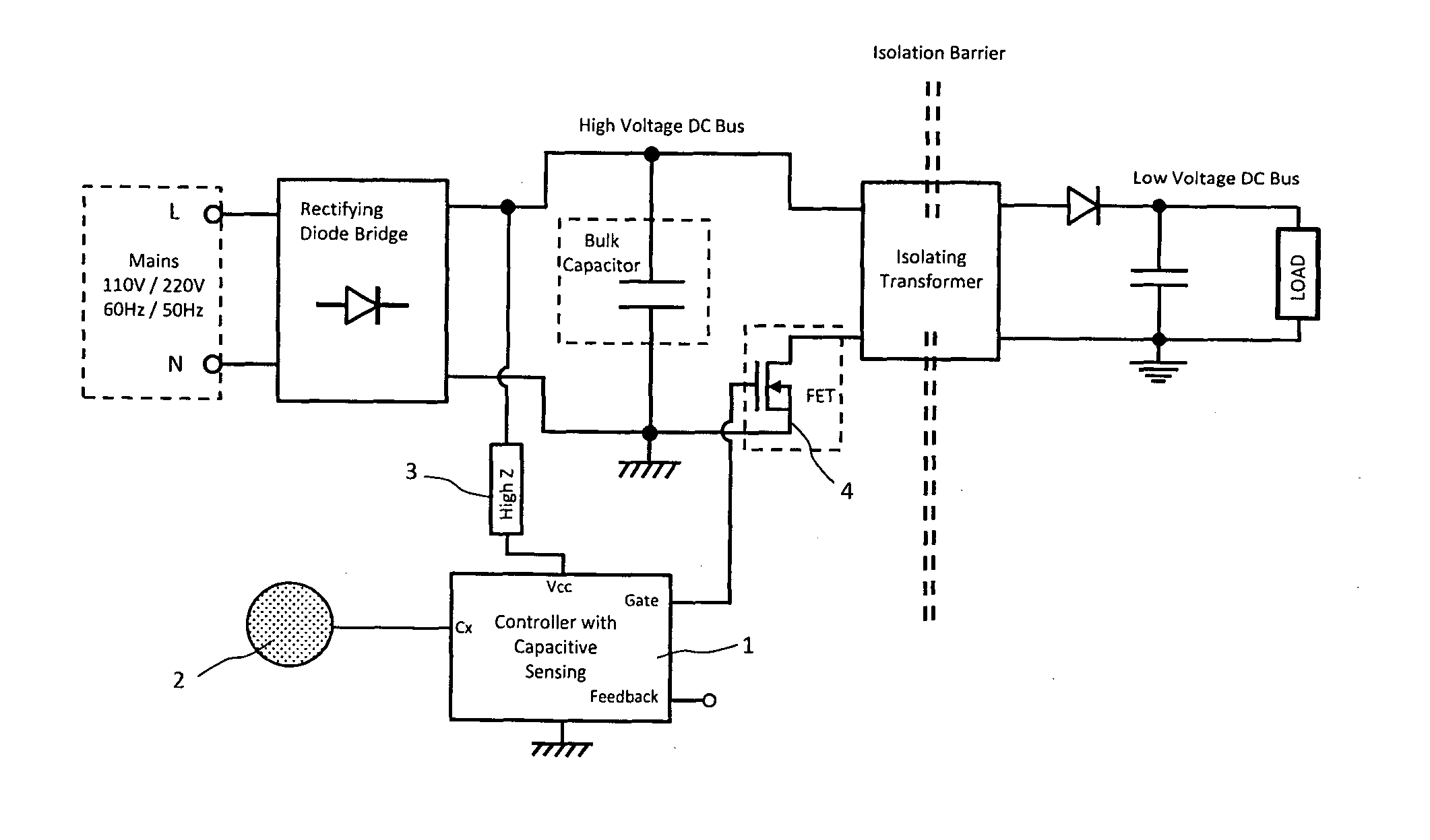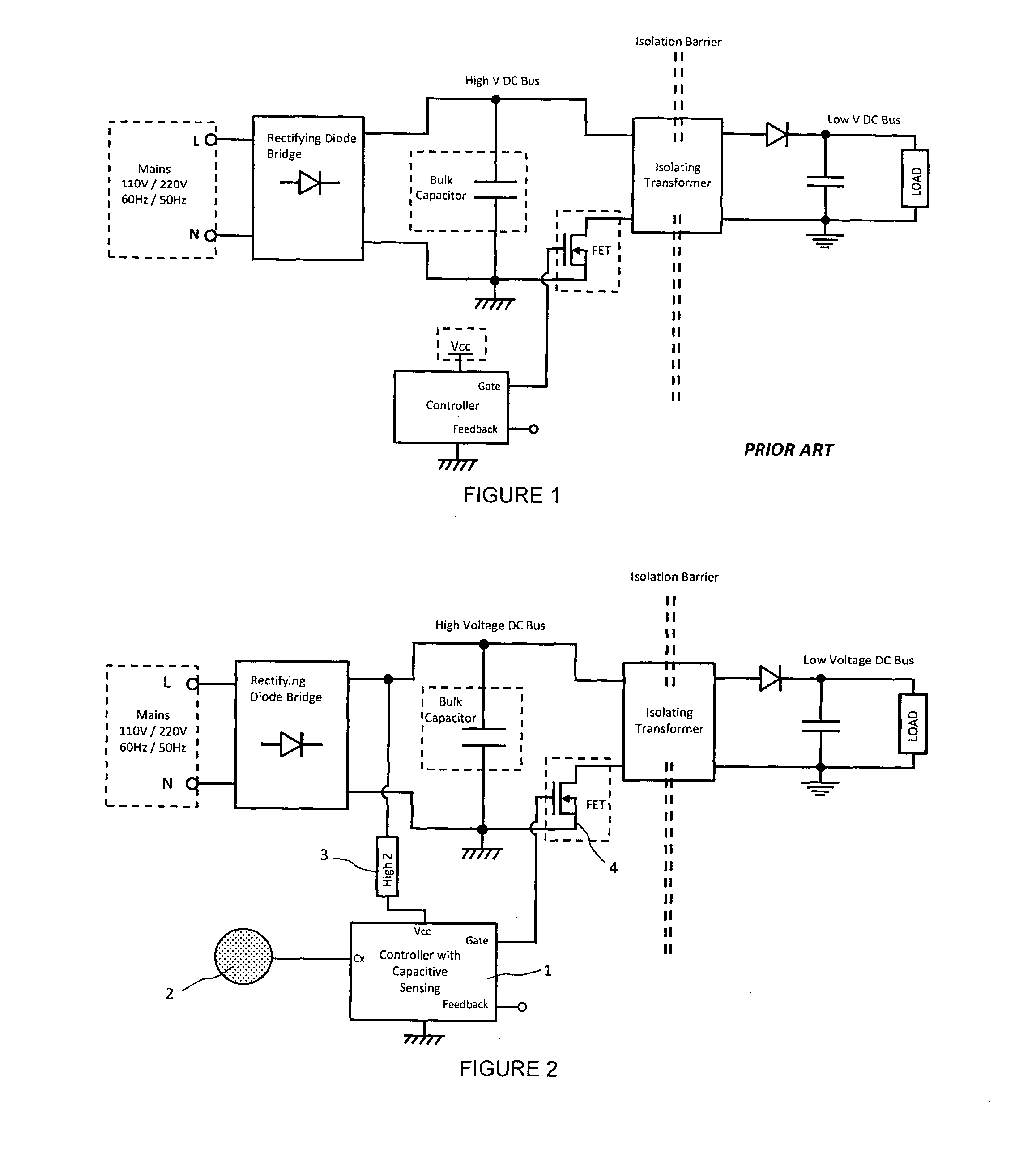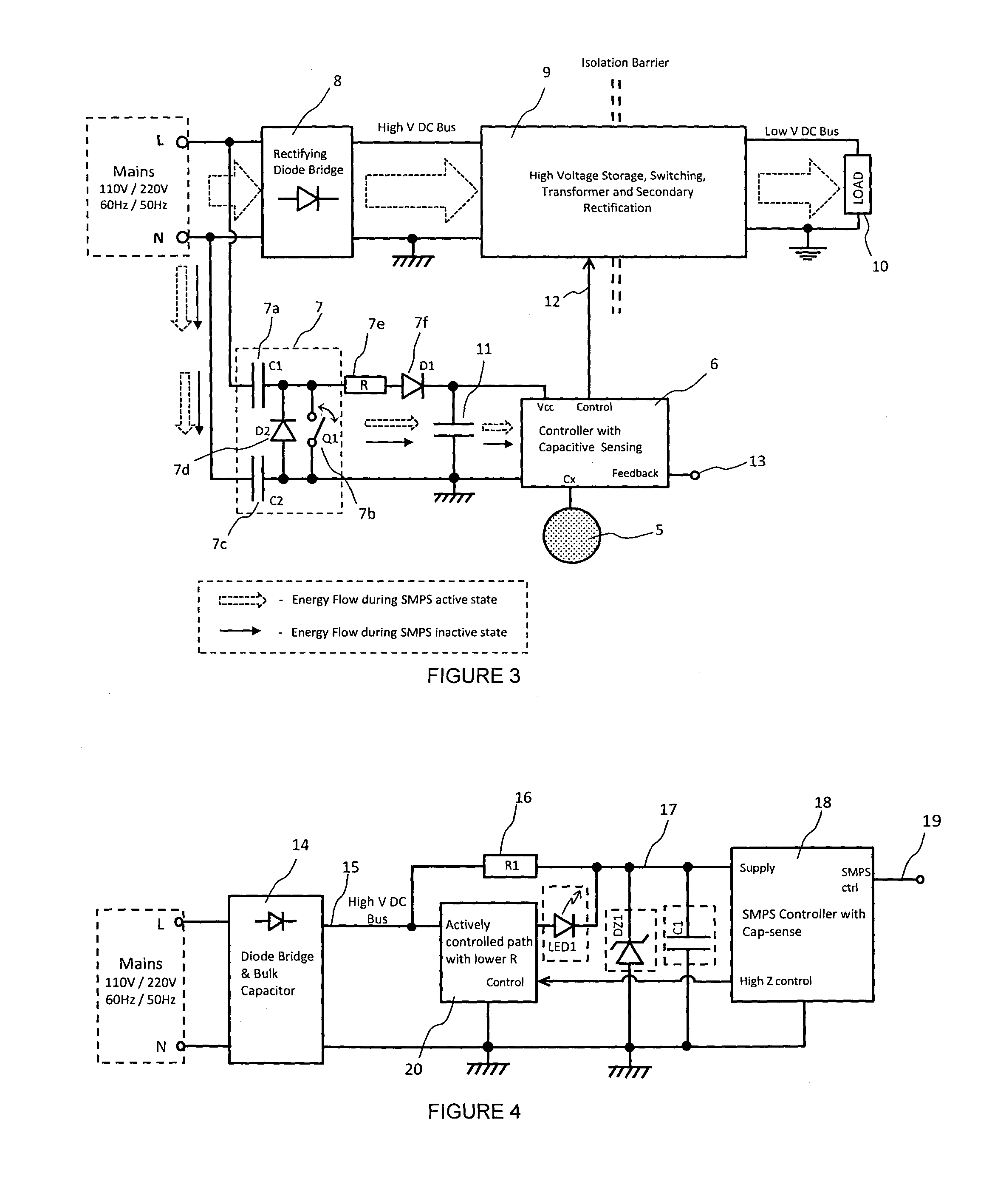Capacitive sensing enabled switch mode power supply and data transfer
a technology of capacitive sensing and power supply, applied in the direction of electric variable regulation, process and machine control, instruments, etc., can solve the problems of end devices not being powered anymore, incurring unnecessary losses, and still incurred losses of these efficient switching circuits, so as to reduce the frequency of conduct or radiated emissions, less energy being transferred, and less light emitted
- Summary
- Abstract
- Description
- Claims
- Application Information
AI Technical Summary
Benefits of technology
Problems solved by technology
Method used
Image
Examples
Embodiment Construction
[0112]FIG. 2 shows an exemplary SMPS that applies some of the teachings of the present invention. The alternating current (AC) supply from the mains, or utility network, is typically rectified by a diode bridge, resulting in a high level direct current (DC) voltage. This voltage may typically be maintained by a fairly large bulk capacitor, used as temporary energy store. For a fly-back converter, as illustrated, a main switching element, MOSFET (4) in the example shown, may be closed, which may allow current to build up through the primary winding of an isolation transformer, fed from the bulk capacitor. When said main switching element (4) is opened, the magnetic energy stored in the primary winding of the transformer will typically be commutated to the secondary winding, hence the name fly-back. The voltage at the secondary may depend on the turns ratio of the transformer. After rectification and storage in a secondary bulk capacitor, the output voltage may be fed to the load. In ...
PUM
 Login to View More
Login to View More Abstract
Description
Claims
Application Information
 Login to View More
Login to View More - R&D
- Intellectual Property
- Life Sciences
- Materials
- Tech Scout
- Unparalleled Data Quality
- Higher Quality Content
- 60% Fewer Hallucinations
Browse by: Latest US Patents, China's latest patents, Technical Efficacy Thesaurus, Application Domain, Technology Topic, Popular Technical Reports.
© 2025 PatSnap. All rights reserved.Legal|Privacy policy|Modern Slavery Act Transparency Statement|Sitemap|About US| Contact US: help@patsnap.com



